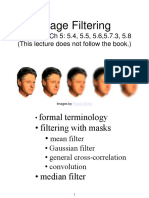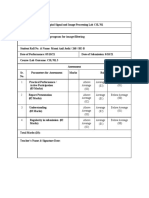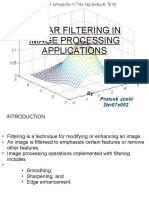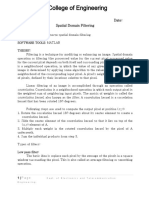0% found this document useful (0 votes)
20 views16 pagesCorrelation & Convolution
The document discusses correlation and convolution as fundamental operations in computer vision, focusing on their mathematical definitions and applications in image processing. It outlines the steps involved in correlation, including the use of a kernel to measure similarity between images, and provides an example of applying a blur filter. Additionally, it explains convolution as a pixel-wise transformation of an image using a kernel, highlighting the differences between the two processes.
Uploaded by
takash2412Copyright
© © All Rights Reserved
We take content rights seriously. If you suspect this is your content, claim it here.
Available Formats
Download as PPTX, PDF, TXT or read online on Scribd
0% found this document useful (0 votes)
20 views16 pagesCorrelation & Convolution
The document discusses correlation and convolution as fundamental operations in computer vision, focusing on their mathematical definitions and applications in image processing. It outlines the steps involved in correlation, including the use of a kernel to measure similarity between images, and provides an example of applying a blur filter. Additionally, it explains convolution as a pixel-wise transformation of an image using a kernel, highlighting the differences between the two processes.
Uploaded by
takash2412Copyright
© © All Rights Reserved
We take content rights seriously. If you suspect this is your content, claim it here.
Available Formats
Download as PPTX, PDF, TXT or read online on Scribd
/ 16



























































